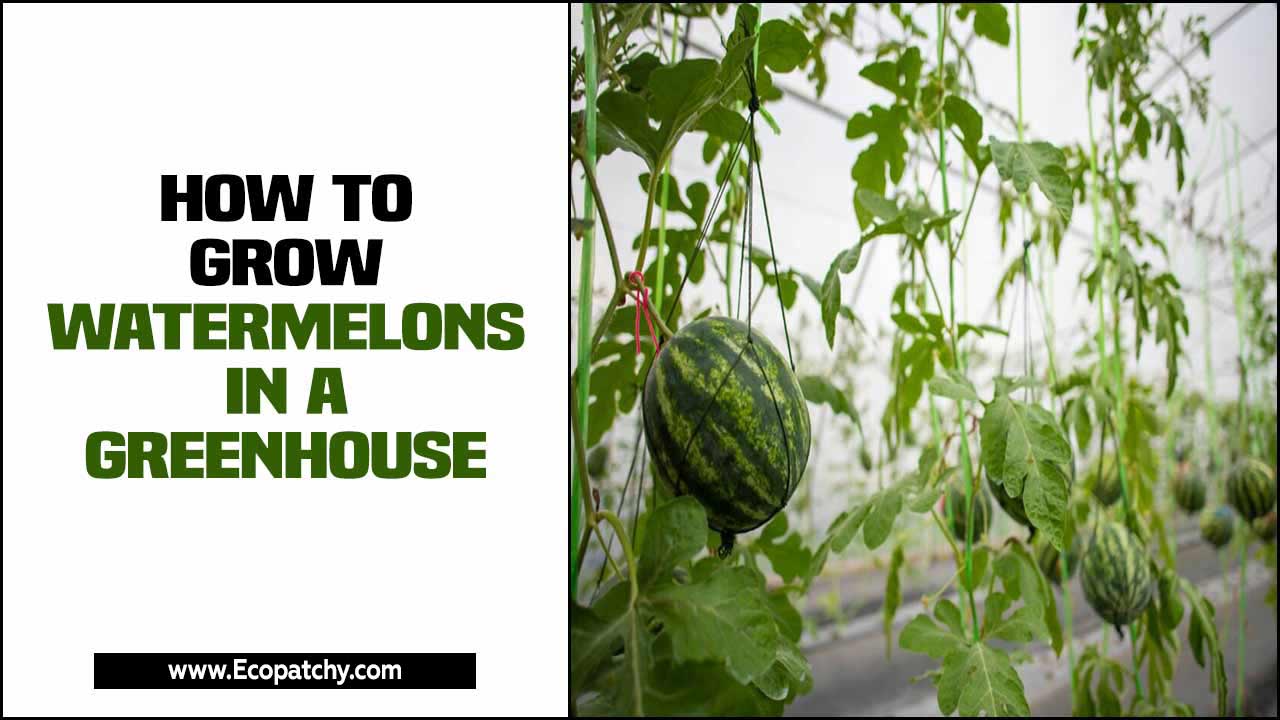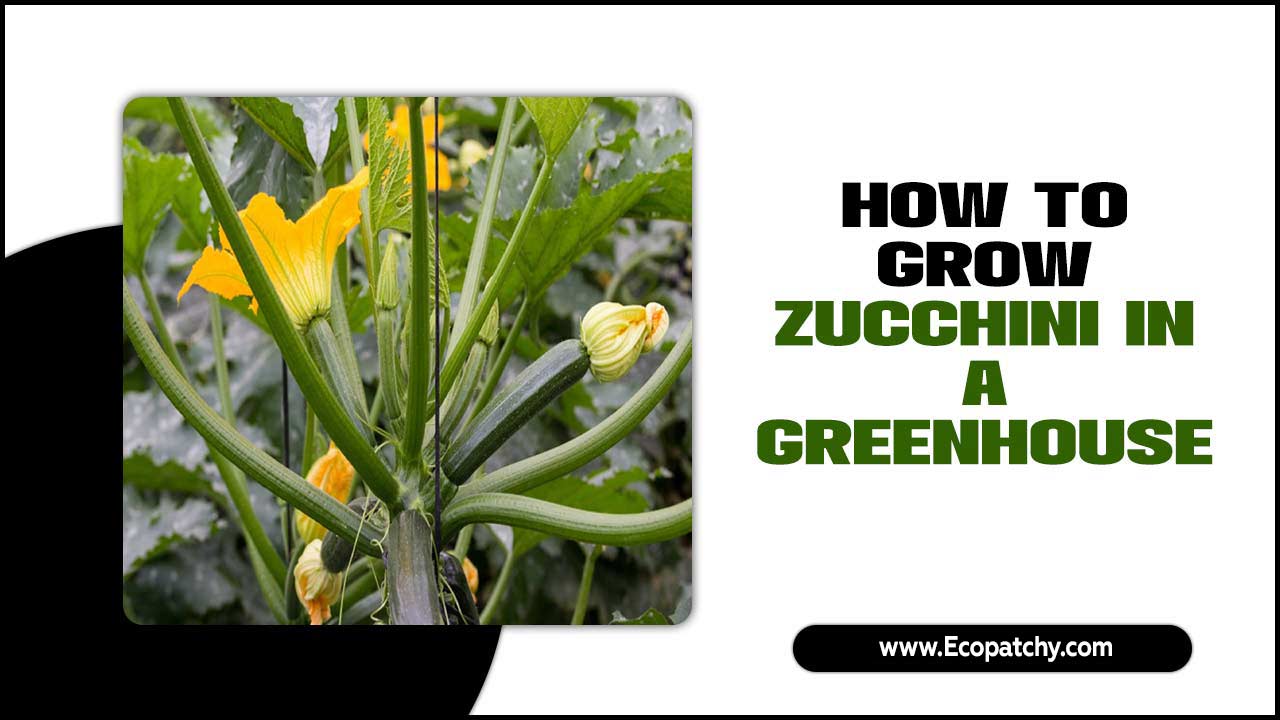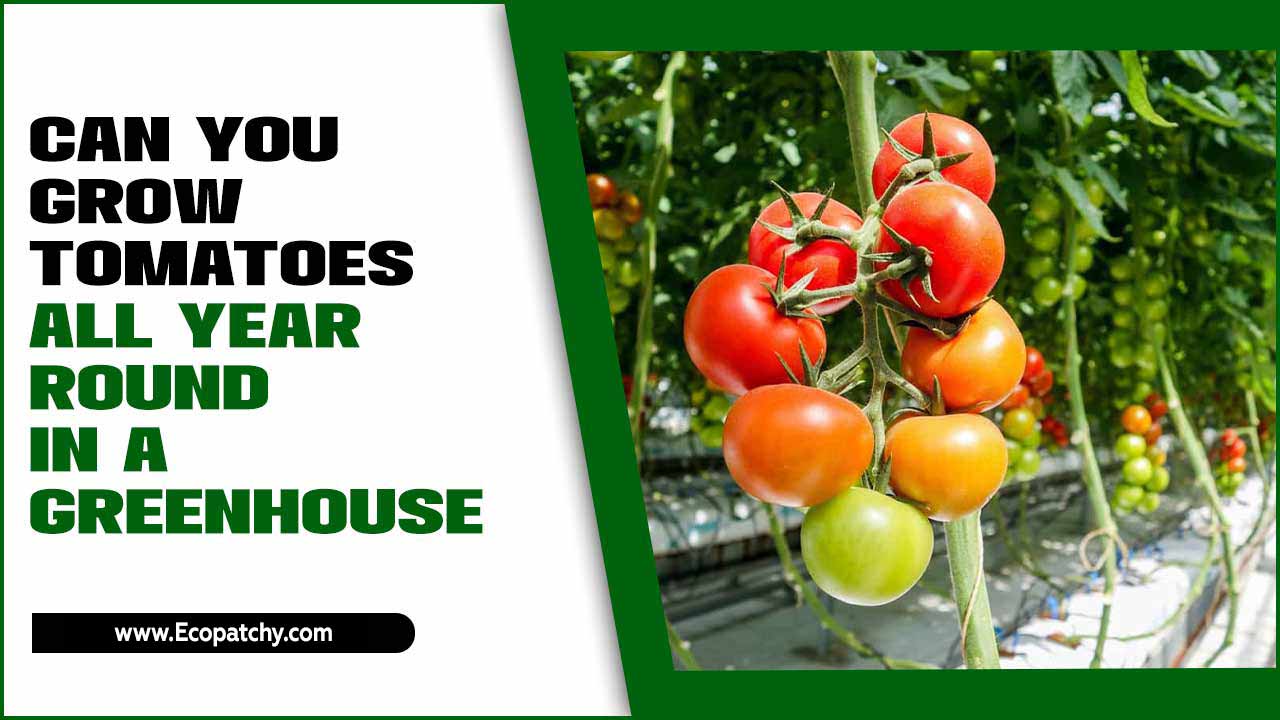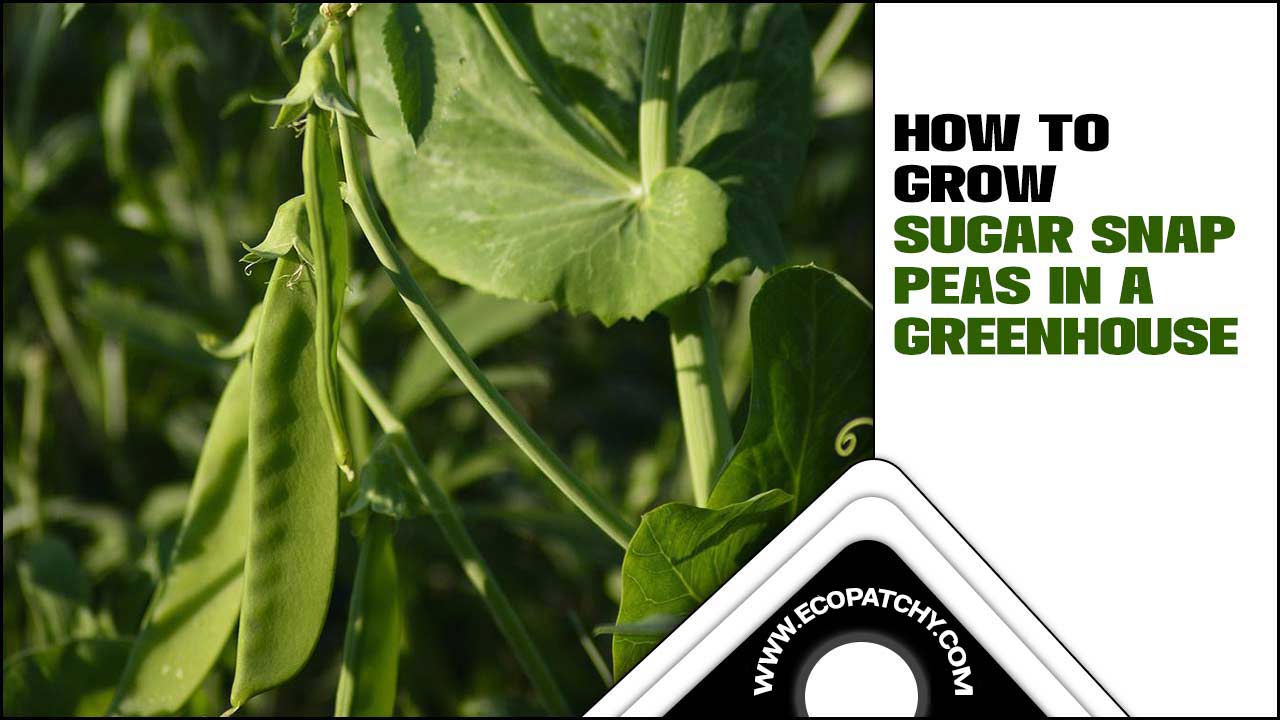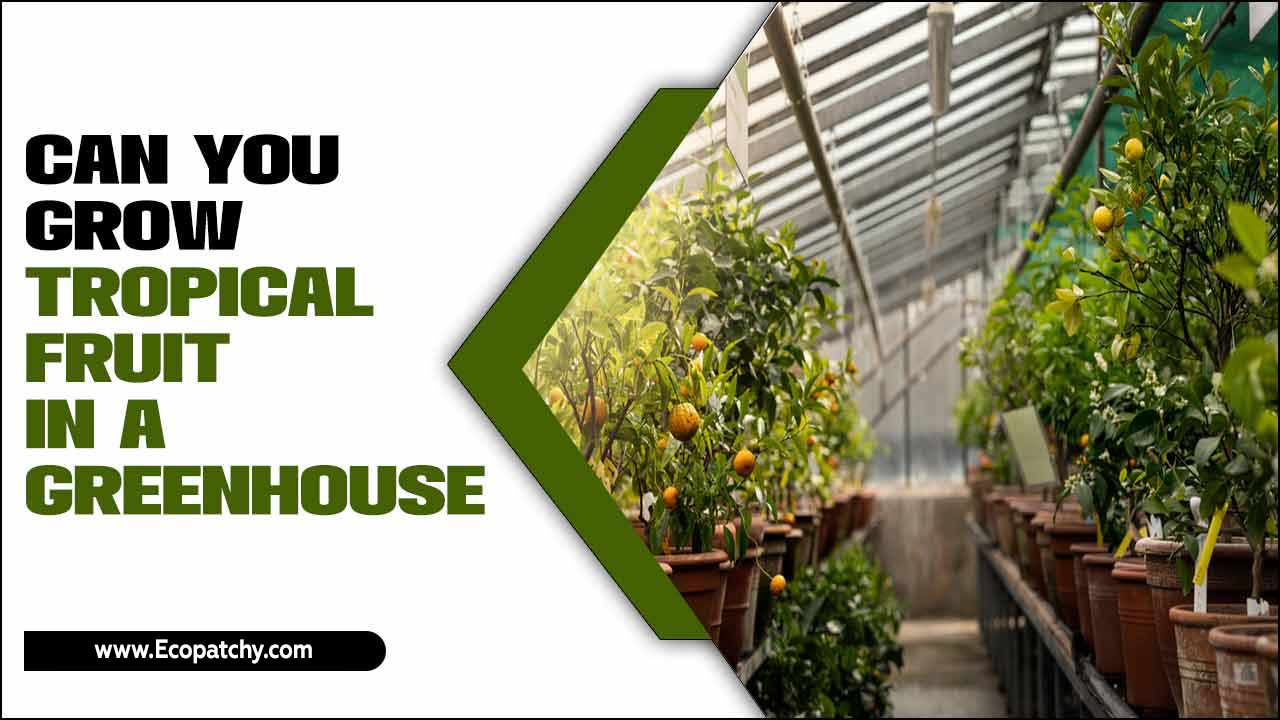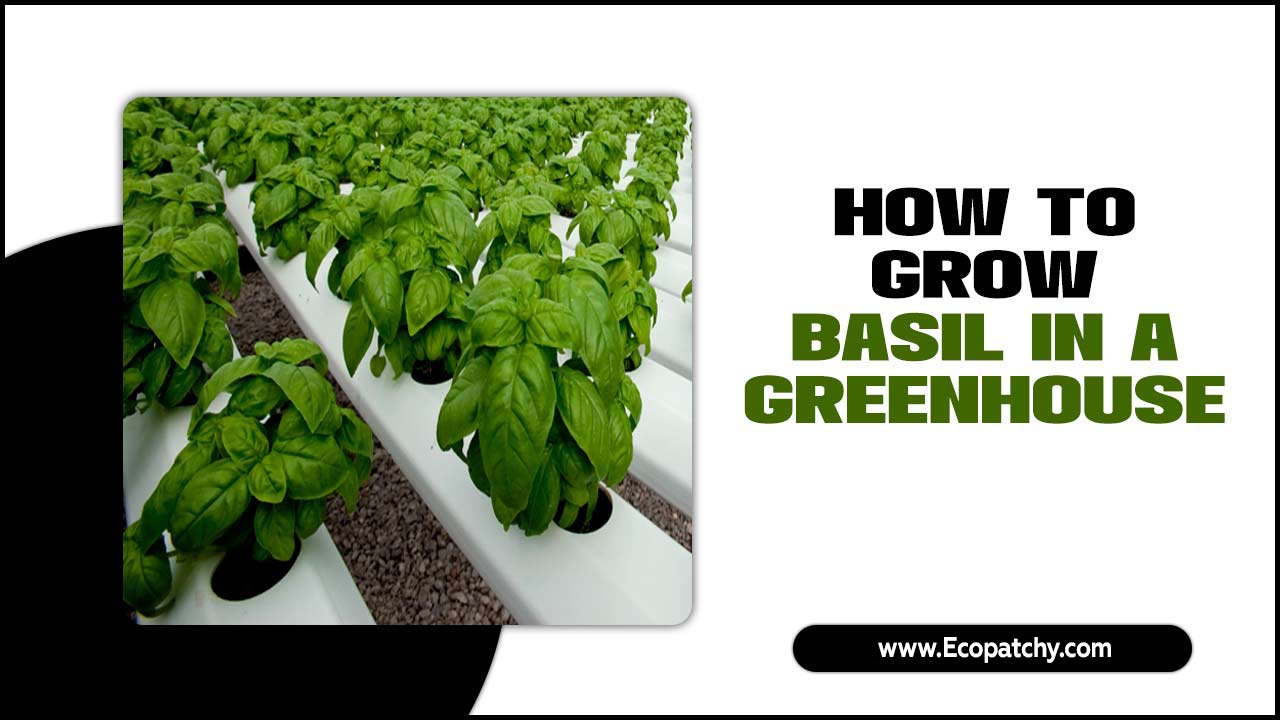Eggplants, also known as aubergines, are a versatile and delicious addition to any garden. With their rich and meaty texture, they can be used in a variety of dishes, from stews to stir-fries.
However, growing eggplants outdoors can be challenging, especially in climates with shorter growing seasons. That’s where a greenhouse comes in handy. By providing a controlled environment with consistent temperatures and protection from the elements, a greenhouse is the perfect place to grow eggplants.
Here, we will walk you through everything you need to know about growing eggplants in a greenhouse. From choosing the right variety of eggplant and starting from seed vs. buying seedlings to planting in containers vs. in the ground and caring for your plants throughout their lifecycle. We will also discuss how to grow eggplants in a greenhouse.
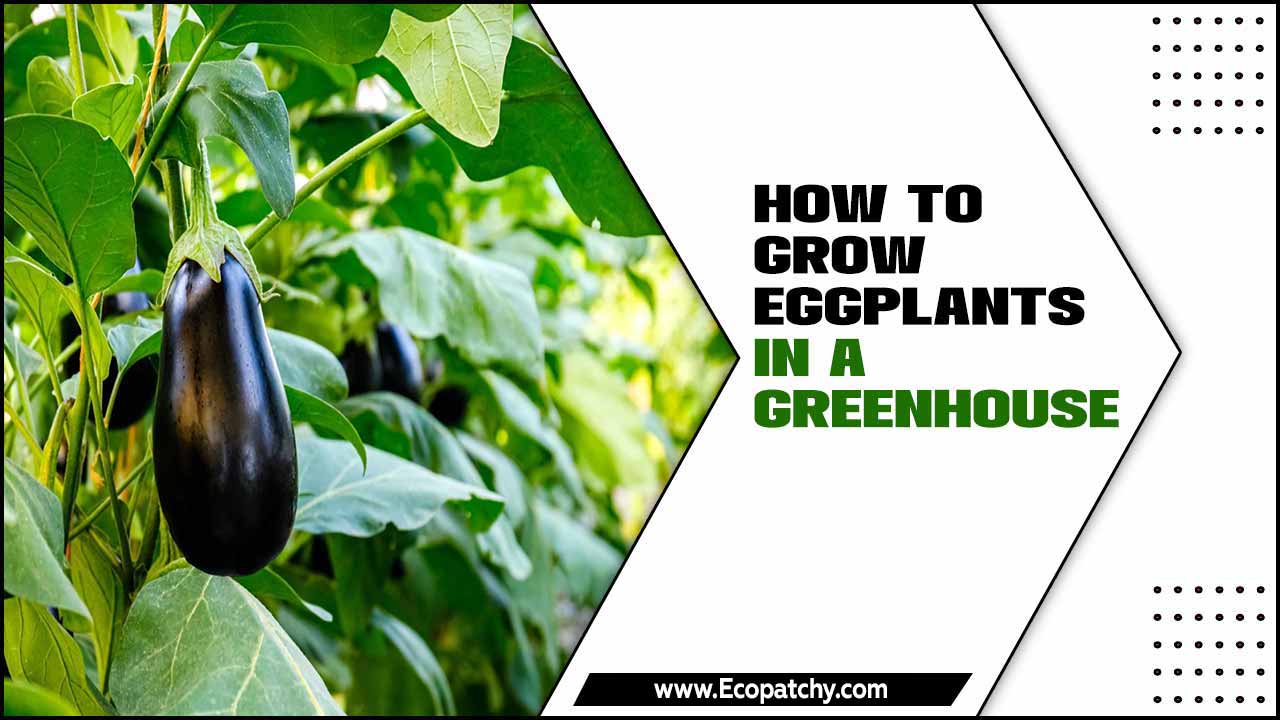
The Benefits Of Growing Eggplants
Growing your own eggplants in a greenhouse offers numerous benefits. These versatile vegetables are perfect for various dishes, and having a fresh, organic supply right at your fingertips ensures that you’re getting the best quality produce. Not only are eggplants rich in nutrients like fiber, vitamins, and antioxidants, but homegrown ones also boast superior taste and texture compared to store-bought varieties.
Cultivating eggplants can be a rewarding experience for gardeners, providing a head start in the growing season and reducing the risks of pests, diseases, and environmental factors. Experience the joy of harvesting your own eggplants and enjoy their delicious flavors in your favorite recipes.
Why Grow Eggplants In A Greenhouse
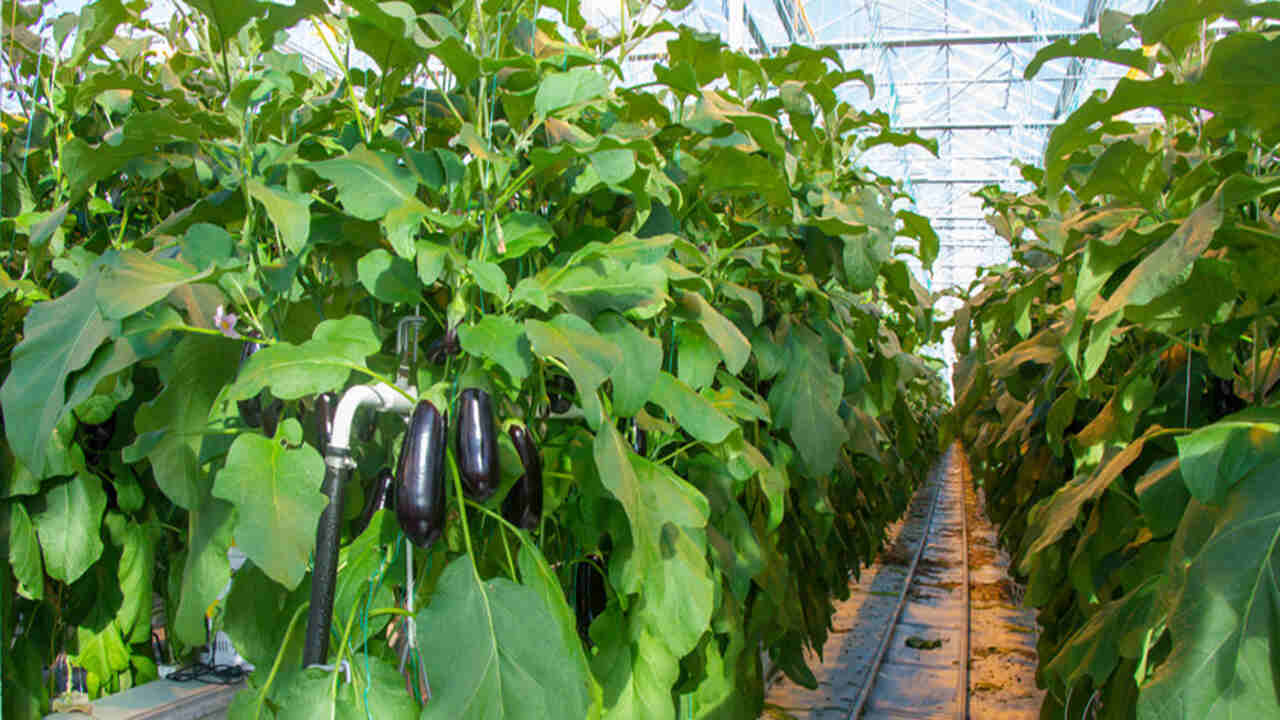
Greenhouses provide an ideal controlled environment for growing eggplants. Regardless of the growing season, you can cultivate eggplants year-round in a greenhouse. Temperature fluctuations are no longer a concern as greenhouses protect the plants, ensuring consistent growth.
Moreover, the humidity level in a greenhouse can be adjusted to create a favorable atmosphere for eggplant cultivation. By growing eggplants in a greenhouse, you significantly reduce the risks of pests, diseases, and adverse weather conditions. With a greenhouse, you can enjoy a steady supply of healthy eggplants all year.
Quick Overview Of How To Grow Eggplants In A Greenhouse

When growing eggplants in a greenhouse, it’s important to choose a well-equipped structure with ample space, proper ventilation, and adequate sunlight exposure. To get a head start, start eggplant seeds indoors under grow lights or on a sunny windowsill. Here is a quick overview of how to grow eggplants in a greenhouse.
- Type: Warm-season crop
- Time From Seed To Harvest: 100 to 150 days (70 to 85 days from planting transplants)
- Germination Temp: 60-95°F (best 80-90°F)
- Time Until First Emergence: 7-10 days
- Best Temp To Grow: 70-75°F
- Height: 24-48 in
- Spread: 24-48 in
- Grow From Seed: 1/4 in deep, leave up to 24-36 inches between plants if planted in rows.
- Companions: Marigolds, spinach, oregano, nightshades, broccoli, kohlrabi, borage, pole beans, nasturtiums
- Keep Away From: Fennel, corn, geraniums, zucchini, pumpkins, brussels sprouts, and melons.
How To Choose The Right Variety Of Eggplant

When choosing the right variety of eggplant for greenhouse cultivation, consider the globe eggplant. This kind of eggplant is large, round, and purple, making it perfect for various dishes. Globe eggplants thrive in temperate climates and have a relatively long growing season, taking about 80-90 days to mature.
They are an excellent choice for greenhouse growers who want to give their eggplants a head start. With their robust plant stems and foliage, globe eggplants resist pests, diseases, and adverse weather conditions. Harvest these beautiful purple orbs and enjoy the delicious taste they bring to your dishes.
Globe Eggplant:
To successfully grow Globe Eggplants in a greenhouse, start by selecting a suitable location that offers ample sunlight and proper ventilation. Ensure that the soil is prepared with organic matter and maintains a pH level of 6.0-7.0. Begin with high-quality seeds and transplant the seedlings once they have reached an appropriate size.
It is crucial to maintain optimal temperature and humidity levels within the greenhouse to promote healthy eggplant growth. Regularly water and fertilize the plants while keeping a vigilant eye out for pests and diseases. With proper care, you’ll enjoy a bountiful harvest of delicious Globe Eggplants in no time.
Chinese Eggplant:
To successfully grow Chinese eggplants in a greenhouse, it’s important to choose the right variety that is well-suited for greenhouse cultivation. Make sure to provide proper sunlight, maintain appropriate temperature and humidity levels, and use high-quality soil and fertilizer.
Monitor and control pests and diseases to ensure the health of the plants. Additionally, utilizing proper pruning and trellising techniques can help maximize yield and space efficiency. By following these guidelines, you can cultivate thriving Chinese eggplants in your greenhouse.
Thai Eggplant:
Thai Eggplant: To successfully grow Thai eggplants in your greenhouse, it’s important to choose the right variety that thrives in both your region and greenhouse environment. Prepare the soil in the container or pot you’ve selected by incorporating compost for optimal nutrient levels.
Maintaining the ideal temperature, humidity, and lighting conditions is crucial for the healthy growth of Thai eggplants. Regular watering and fertilization, as well as pruning, promote robust foliage and fruitful harvests. Keep an eye out for common pests like aphids and diseases that can affect eggplants in a greenhouse. Harness your gardening skills to cultivate these flavorful Thai aubergines!
Starting From Seed Vs. Buying Seedlings

Starting from seed offers greater control over the growing process, allowing gardeners to nurture the plant stems right from the beginning. On the other hand, buying seedlings can save time and reduce the risk of failure since they already have a head start.
It’s important to consider the cost and availability of seeds versus seedlings, as well as the wider selection of eggplant varieties available when starting from seed. However, starting from seed does require more time and effort compared to buying seedlings. Ultimately, choosing between starting from seed and buying seedlings depends on individual preferences and circumstances.
Planting In Containers Vs. In The Ground
When it comes to growing eggplants in a greenhouse, you have the option of planting them either in containers or in the ground. Planting them in containers offers easy maintenance and allows for better control over soil conditions. On the other hand, planting them in the ground provides more space for growth and ultimately leads to a larger yield. Containers are ideal for smaller greenhouses or limited spaces, while ground planting suits larger greenhouses or outdoor gardens. When deciding between the two, it’s important to take factors such as soil quality and drainage into consideration.
How To Care For Eggplants Grown In A Greenhouse
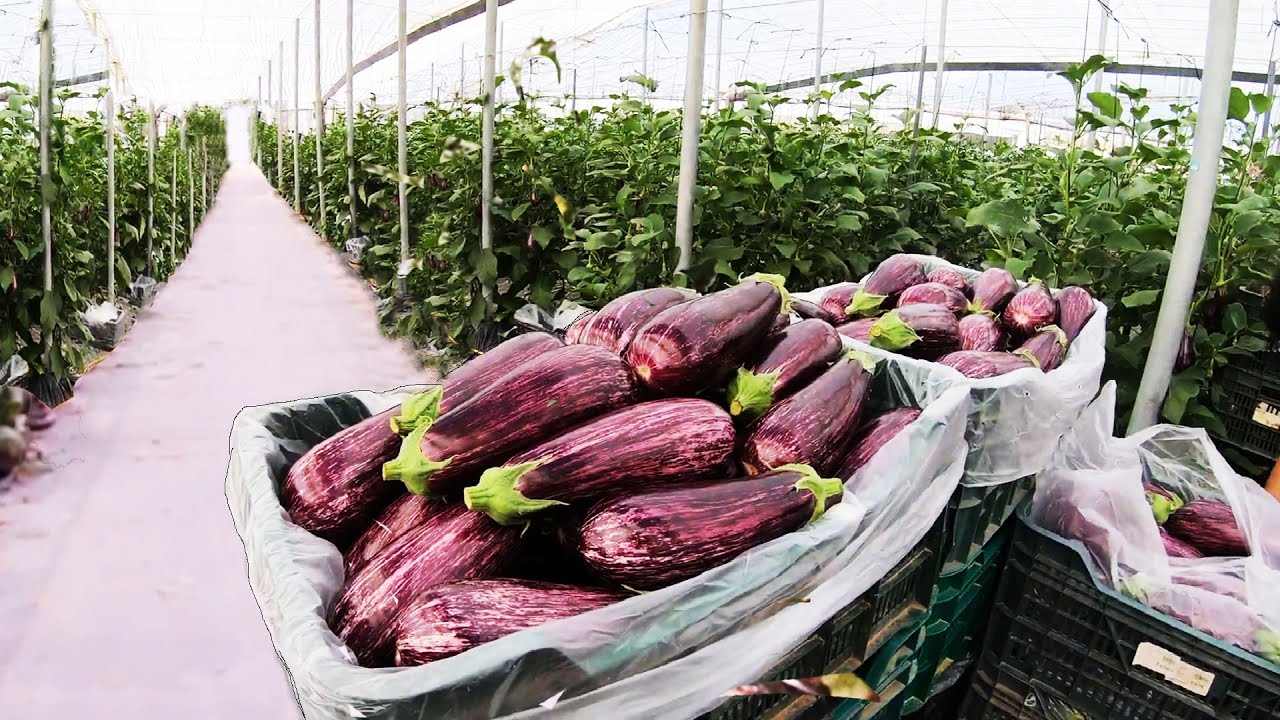
To care for eggplants grown in a greenhouse, choose the right variety that thrives in protected environments. Provide adequate light and temperature control to ensure optimal growth. Maintain the proper soil conditions by using quality fertilizers and organic matter like manure.
Regularly monitor for pests and diseases, like aphids or fungal infections, and take necessary measures to control them. Additionally, properly train and support the plant stems to prevent breakage and maximize yield. By following these guidelines, green-thumb gardeners can enjoy a bountiful harvest of delicious eggplants in their greenhouse.
Light Requirements
To ensure successful greenhouse eggplant cultivation, it is essential to provide proper sunlight or grow lights. Eggplants thrive in full sun, so it’s crucial to ensure adequate light exposure. This can be achieved by using grow lights or placing the greenhouse in a location that receives ample sunlight.
In temperate climates, greenhouse crops can be utilized to grow eggplants year-round. To optimize growth, greenhouse eggplants require a minimum of 6 hours of direct sunlight daily. Additionally, adjusting the temperature difference within the greenhouse can further enhance eggplant growth.
Temperature
To ensure optimal eggplant germination, maintain a temperature range of 70-85°F in your greenhouse. Greenhouse eggplants thrive when the relative humidity is between 40-70%. During eggplant fruit maturity, aim for a temperature of 75-85°F. To promote healthy growth, it’s ideal to have a temperature difference of 10-15°F within the greenhouse. This temperature variation helps mimic natural outdoor conditions. By using a greenhouse, you can protect your eggplants from extreme temperature fluctuations that could hinder their growth.
Pollination
To facilitate pollination in a greenhouse, growers can introduce pollinators like bumblebees to their eggplant crops. Alternatively, hand pollination can be done using a sharp knife or a paintbrush. Maintaining a temperature of 75-85°F is crucial for optimal pollination and fruit set of greenhouse eggplants.
Pollination is essential as it leads to a bountiful harvest of delicious eggplants. By following these pollination techniques, gardeners can give their greenhouse eggplants a head start and ensure a successful harvest without relying solely on natural pollinators.
Common Eggpla
Eggplants, also known as aubergines, thrive in warm and humid environments, making them perfect candidates for greenhouse cultivation. When growing eggplants in a greenhouse, it’s essential to choose the right variety that suits your specific environment. Options like the Black Beauty or the Japanese Long are excellent choices.
Utilize well-draining soil and fertilizers to provide optimal conditions for growth and yield. Regularly monitor temperature and humidity levels to ensure an ideal growing environment. Protect your eggplants from pests and diseases by implementing proper ventilation and utilizing natural remedies such as neem oil or soap sprays.
When To Harvest Eggplants
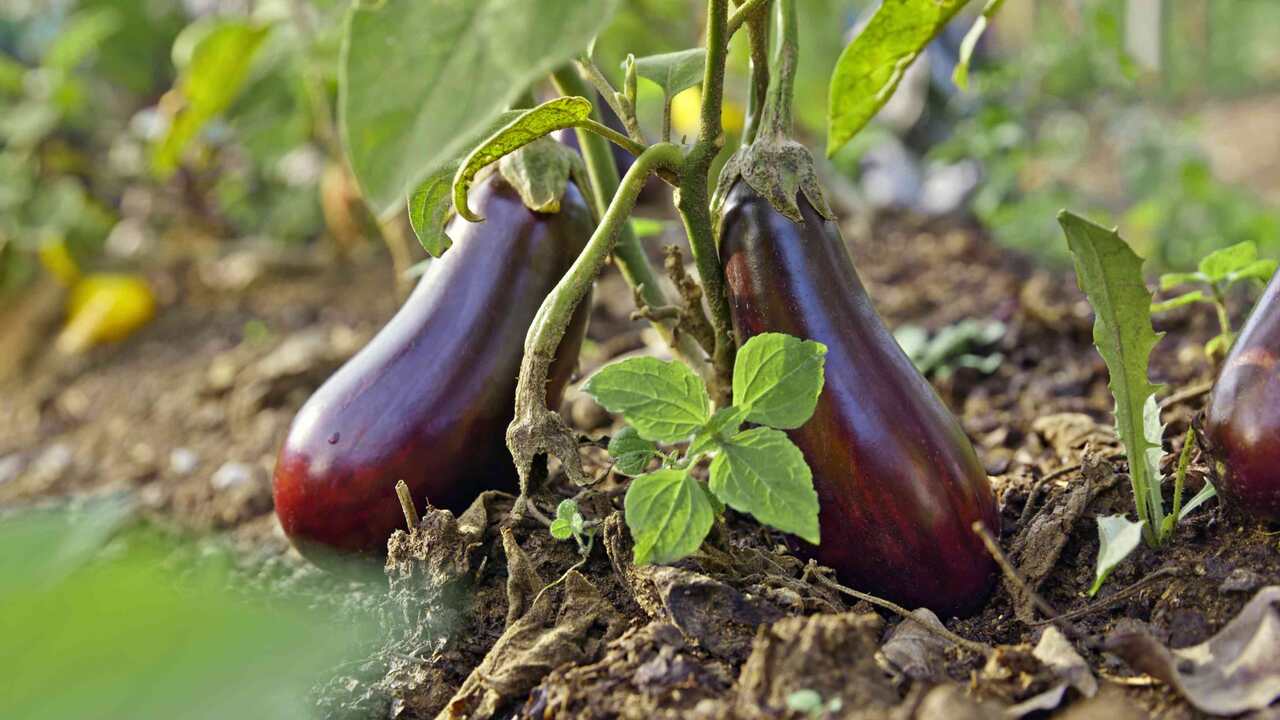
When it comes to harvesting eggplants grown in a greenhouse, timing is crucial. To ensure that you harvest your eggplants at the right time, keep a few key indicators in mind. Wait until the eggplants reach their full maturity before harvesting them. A good rule of thumb is to pick them when the fruit diameter is around 2-4 inches.
For the best flavor and freshness, consider harvesting in the morning. Look for a dark, glossy shade on the stalk color of the eggplant fruits, as this is a sign of readiness. For a bountiful yield, September to November is the ideal time to harvest greenhouse-grown eggplants.
Conclusion
Growing eggplants in a greenhouse offer numerous benefits, including extended growing seasons, protection from pests and diseases, and better control over environmental conditions. When choosing the right variety, consider factors such as size, taste, and intended use.
Whether you start from seed or buy seedlings and plant in containers or the ground depends on your resources and preferences. Proper care, including providing adequate light and temperature, pollination, and addressing common issues like pests and diseases, will ensure healthy and productive eggplants.
Lastly, knowing when to harvest is crucial for achieving optimal flavor and texture. So, embrace the possibilities of greenhouse gardening and enjoy the satisfaction of harvesting your own delicious eggplants. We’ve discussed how to grow eggplants in a greenhouse.
Frequently Asked Questions
1.Where Should I Plant My Eggplant?
Ans: To ensure optimal growth, plant your eggplants in a location that receives at least 6 hours of direct sunlight daily. Choose well-draining soil with a pH level between 6.0-7.0. Whether in rows or spaced 18 to 24 inches apart.
2.Do Eggplants Do Well In A Greenhouse?
Ans: Yes, eggplants can thrive in a greenhouse environment. Greenhouses provide a stable temperature and protection from pests and disease. They require warm temperatures and plenty of sunlight to grow well. Proper watering and fertilization are also essential for successful eggplant cultivation in a greenhouse.
3.Does Eggplant Need A Trellis To Grow?
Ans: Eggplants can thrive without a trellis, but it is advisable to support the plant. A trellis helps the eggplant grow upright, preventing it from sprawling on the ground. It also enhances air circulation, reducing the risk of diseases.
4.What Are The Advantages Of Growing Eggplants In A Greenhouse?
Ans: Growing eggplants in a greenhouse offers numerous benefits. It extends the growing season, protecting the plants from extreme weather conditions. Greenhouses provide a controlled environment where you can regulate temperature, humidity, and light.
5.Do Eggplants Need A Lot Of Space To Grow?
Ans: Eggplants don’t require a significant amount of physical space, but they do need room for their root systems to grow. In a greenhouse, they can be grown in containers or raised beds to maximize space. Pruning techniques can also help manage the plant’s size and increase yield.

